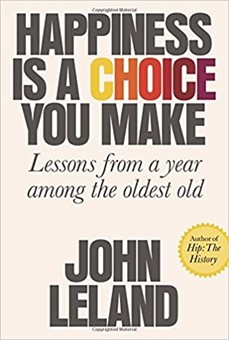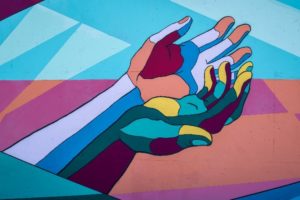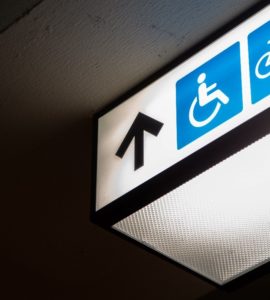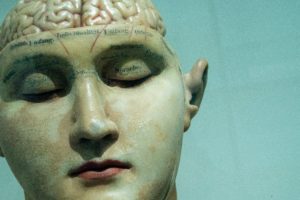Fall 2020 Resources
By Nela Handac, SPT
What We’re Reading
 Happiness is a Choice You Make by John Leland
Happiness is a Choice You Make by John Leland
Aging is something that we, as a society, tend to see in a negative light—a period of life when everything deteriorates, including our value to society. We fear that we will no longer be able to think for ourselves, act for ourselves, or do the things that bring us joy.
Happiness is a Choice You Make chronicles the lives of six people categorized as the “oldest old” and aims to reveal the flaws in the way we think and feel about aging. John Leland takes an endearing and deeply informative dive into the minds of a diverse group of elderly people living in today’s America. He frames the elderly population as vital societal resources who have the capacity to teach us valuable life lessons from their wisdom and experience. Knowing that the aging population is currently the fastest-growing age group, it is critical to get to know and interact with those who make up this population in a deeper and more meaningful way. This will not only benefit our interactions but can serve as a way to better understand our own lives and how we may envision our future as we age.
From a clinical viewpoint, this book can be used as a resource for those working with the geriatric population. Ageism transcends the confines of healthcare and impacts a patient’s sense of identity on a deeper level. As rehab professionals, we have a unique opportunity to reflect inwardly and address these biases in order to make the lives of our older patients richer, while providing more compassionate and effective care.
However, even outside of the clinical perspective, this book holds tremendous value for people who may be taking care of a loved one who is aging, or for someone who is struggling with their own personal aging journey. At its core, Happiness is a Choice You Make serves as a roadmap for what it means to live a full and meaningful life—throughout its span.
The Weighing, by Jane Hirschfield

Photo by Roman Kraft on Unsplash
Audio reading available at: https://soundcloud.com/brainpicker/janna-levin-jane-hirshfield-the-weighing
The heart’s reasons
seen clearly,
even the hardest
will carry
its whip-marks and sadness
and must be forgiven.
As the drought-starved
eland forgives
the drought-starved lion
who finally takes her,
enters willingly then
the life she cannot refuse,
and is lion, is fed,
and does not remember the other.
So few grains of happiness
measured against all the dark
and still the scales balance.
The world asks of us
only the strength we have and we give it.
Then it asks more, and we give it.
The Weighing by Jane Hirschfield is an exploration of human nature in the face of hardship. She explains how the weight felt during periods of struggle is a measure of true character. Through Hirschfield’s reflections on these day-to-day challenges, we are able to gain deeper insight into the way we work, live, and love. In healthcare, and rehabilitation medicine in particular, the beauty of this insight lies in our ability to paint an overall picture of how strength and optimism can prevail in the face of what may seem dark and painful in that moment. Hirschfield writes,
The world asks of us
only the strength we have and we give it.
Then it asks more, and we give it.
For rehabilitation professionals, Hirschfield’s reflections are a beautiful depiction of the deep inner strength that fortifies our patients to overcome even the darkest of depths.
What We’re Watching
Healthcare’s Compassion Crisis, a TED Talk by Stephen Trzeciak, MD, MPH

Photo by Tim Mossholder on Unsplash
In this TED talk, Dr. Trzeciak discusses how compassion—a seemingly logical and necessary component of healthcare—has been getting lost amid feelings of burnout and fatigue as the result of the many pressures placed on clinicians in today’s healthcare system.
For healthcare professionals, this talk serves as a reminder of why we decided to become clinicians. Compassion differs from sympathy or empathy in that it requires action—including eye contact, warm gestures, and letting the patient know that you are here to fight alongside them. As a result, compassion can be learned and practiced. Using an evidence-based approach, Dr. Trzeciak posits as to why compassion is in fact necessary for the survival of the healthcare industry and the success of our systems, patients, and even ourselves as providers. The interweaving of evidence and humanity points toward a new methodology for serving our patients and ourselves in deeper and more effective ways. Relationships are central to successful patient care, and by listening to the stories of our patients, we are able to acknowledge them on a deeper level. This acknowledgement and acceptance of the human experience leads to a richer narrative about our patients and fosters a stronger tolerance within ourselves. Integrating humanity in our work enhances inner reflection and self-awareness, which is crucial yet often forgotten in the ever-busy world of medicine.
MoMA’s Disability Equality in Museums YouTube Series

Photo by Charles Deluvio on Unsplash
This YouTube series created by New York City’s Museum of Modern Art (MoMA) takes viewers on a journey into the lives of people living with disabilities while providing a critical perspective on equitable access to art and spaces that hold art. Video interviews are captured of 8 different individuals who identify and live within the Disabled community and provide resources for how the staff at MoMA help to create an equitable space where they can participate fully in the art experience. This dialogue translates into a teaching moment for how the able-bodied community can create more accessible spaces for people living with disabilities. Their stories also serve as a beautiful way to strengthen our work as rehabilitation professionals and clinicians and to provide a meaningful template for working with patients who are experiencing pain or disability, or overcoming trauma.
What We’re Listening to
The Drugs Inside Your Head, an On Being podcast interview with Erik Vance

Photo by David Matos on Unsplash
Pain. We all feel it differently, and it is a mystery to most. However, one thing that is certain about pain is that it stems from our own experiences and the brain’s expectations on how the body is supposed to react to a painful event. This discussion between Krista Tippett and Erik Vance, a science writer, hits on some interesting theories about how our experiences can shape our brain and therefore frame conditions such as chronic pain or Parkinson’s disease. Throughout the discussion, Vance continuously refers to medicine as “theater,” stating the importance of storytelling in the healing process of a patient. Vance believes that there is healing power in the way that people feel around us, what we can say to absolve their fear surrounding certain aspects of their life, and how powerful is the experience of emotions. As practitioners, this discussion offers an interesting perspective to consider when thinking about healing on a more wholistic level.
What We’re Looking at
The Broken Column (1944) by Frida Kahlo
Frida Kahlo’s life was riddled with both emotional and physical pain. The majority of her paintings were reflections on this pain and served as an important means of self-expression for her. The Broken Column (1944) is a self-portrait in which Kahlo depicts herself wearing a corset apparatus to stabilize her spine in an attempt to alleviate the pain she was feeling. In a way, this apparatus was ironic in the fact that it offered her support and healing while simultaneously confining her. The portrait shows tears falling from her eyes, yet she stands in a seemingly brave and courageous stance, making eye contact with the viewer. There are many details to be noticed about the painting that leave the viewer trying to dig deeper into her mind during this time in her life. As therapists, using this type of observational skill with this piece can offer interesting insight on the loneliness experienced by our patients in times of trauma, as well as the therapeutic properties that the act of making art or simply looking at art may provide.
To learn more about Frida Kahlo’s art as it relates to rehabilitation, read the JHR article Frida Kahlo’s Body: Confronting Trauma in Art by art historian Siobhan Conaty, PhD.
To experience additional artwork by Frida Kahlo, visit this site.



 Member since 2019 | JM14274
Member since 2019 | JM14274


NO COMMENT